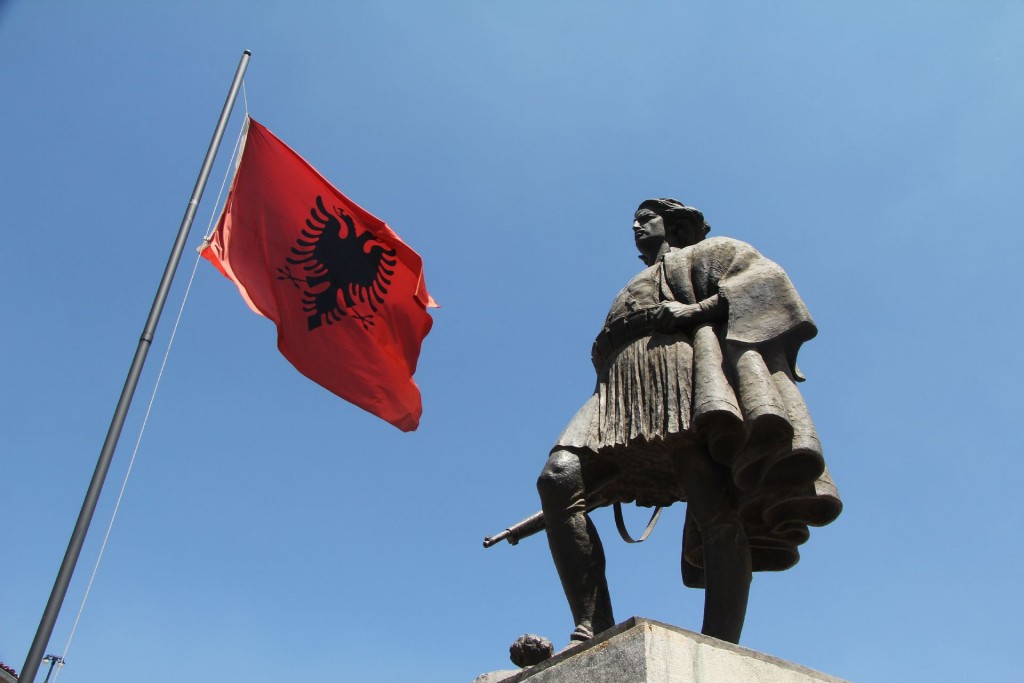 A few months ago we made a trip through the eastern part of Albania.
A few months ago we made a trip through the eastern part of Albania.
One of the places that impressed me most was Korça, in Albanian called Korçë, not far from the Greek border. I think it is exactly this Greek/ Macedonian influence that contributes to the creation of a specific exotic atmosphere in this small town.
Not only the churches and museums are worth a visit, it is also a pleasure to walk along the Boulevard Republika with its old villas and gardens, and to explore the cobbled streets behind the cathedral.
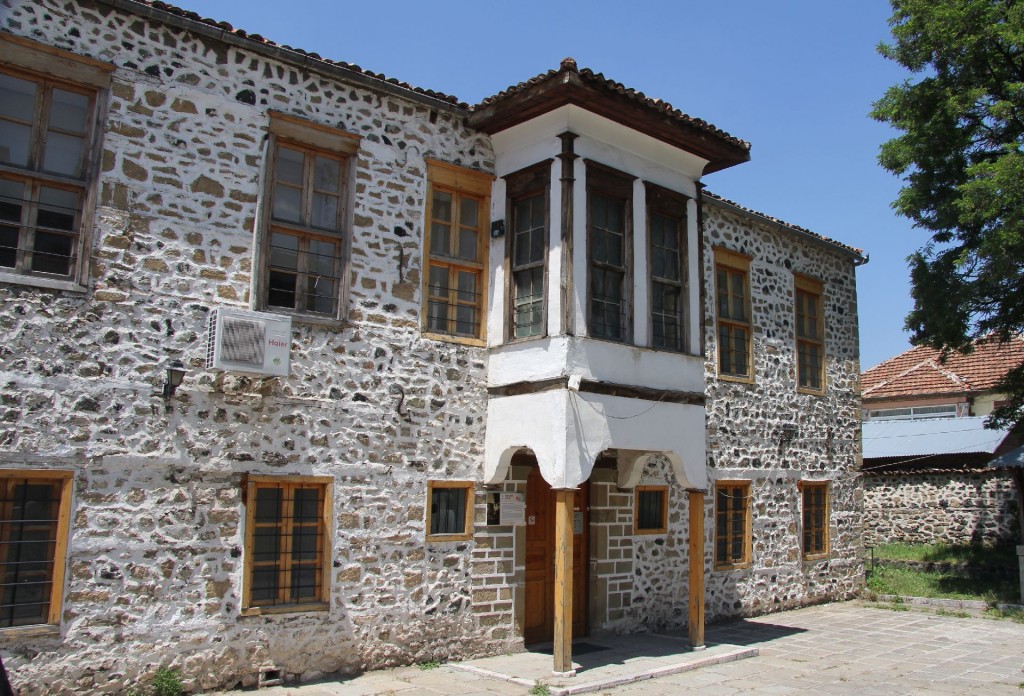 The huge Orthodox Cathedral of the Resurrection (photo 1) is the largest church in Albania and it dominates the central square of Korça. It was rebuilt in 1992 after the previous church on this site was destroyed by the communists in 1968. Although the interior is quite modest, we liked the huge carved wooden iconostasis. When we crossed the square, we could not miss the huge statue of a warrior with the Albanian flag (photo 2). Quite impressive!
The huge Orthodox Cathedral of the Resurrection (photo 1) is the largest church in Albania and it dominates the central square of Korça. It was rebuilt in 1992 after the previous church on this site was destroyed by the communists in 1968. Although the interior is quite modest, we liked the huge carved wooden iconostasis. When we crossed the square, we could not miss the huge statue of a warrior with the Albanian flag (photo 2). Quite impressive!
Although the First Albanian School is known as an important museum (founded in 1887, it was the first secular school with subjects taught in Albanian), the door was locked (photo 3). But fortunately, with the help of a local inhabitant, who made a phone call, we succeeded in finding someone who could open the Medieval Art Museum, which was not so easy off-season… And this museum is, no doubt, the best icon museum I have ever seen! It has a collection of 6,500 icons, but – what a pity – only 200 icons are on display in this curious building that was once the most important Orthodox church of Korçë.
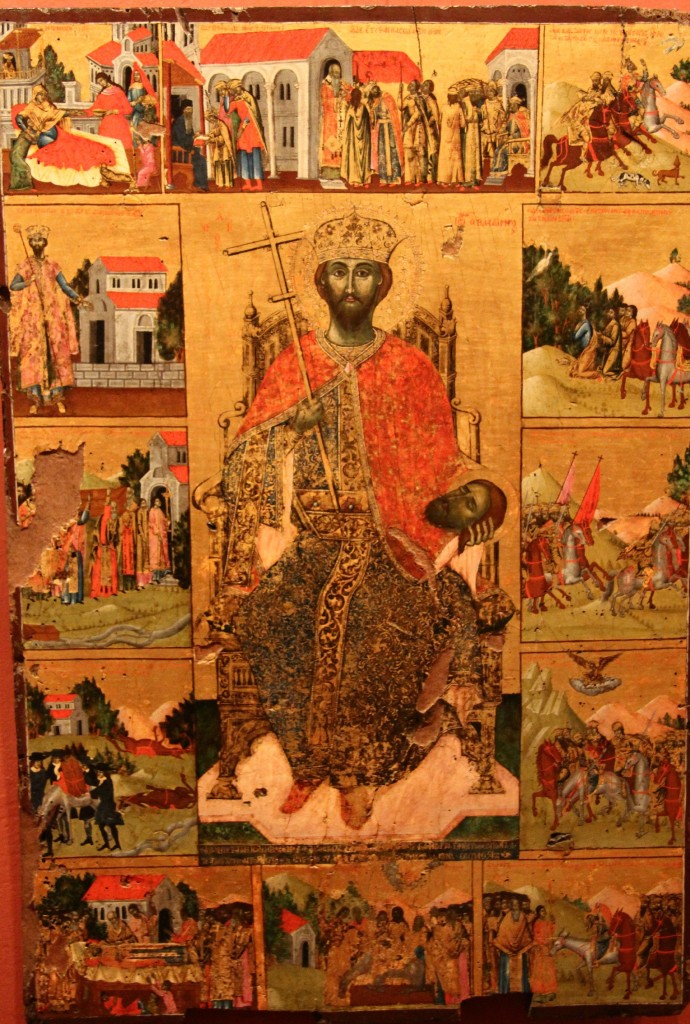 Most icons are from the 16th-19th century, but some of them date back even to the 14th century. It was interesting to see that Orthodox religious art must follow special instructions, e.g. Mary can be depicted in nine poses only. I could not stop admiring the collection of the 16th-century Albanian master Onufri. His icons are famous for their vivid colors – especially the “Onufri red” color – and wonderful details (photo 4). The museum also had a shop and I was very happy to buy a beautiful, hand-painted icon for €60 only. It has got a special place in our apartment!
Most icons are from the 16th-19th century, but some of them date back even to the 14th century. It was interesting to see that Orthodox religious art must follow special instructions, e.g. Mary can be depicted in nine poses only. I could not stop admiring the collection of the 16th-century Albanian master Onufri. His icons are famous for their vivid colors – especially the “Onufri red” color – and wonderful details (photo 4). The museum also had a shop and I was very happy to buy a beautiful, hand-painted icon for €60 only. It has got a special place in our apartment!
But after this fantastic cultural experience we wanted to see another aspect of Korça: the Bazaar (photo 5). The chaotic Old Bazaar district gave us a good idea how this town looked like in Ottoman times. Walking around, we saw that the narrow streets were piled high with all kinds of goods, from shoes and clothes to car parts, while the traditional byrek and grilled meat were offered at each street corner. The green market showed many vivid colors, characteristic for this time of the year (October). The strings of onions, garlic and red peppers looked picturesque indeed (photo 6)! By the way, we heard that this district burned down several times, but it was always restored.
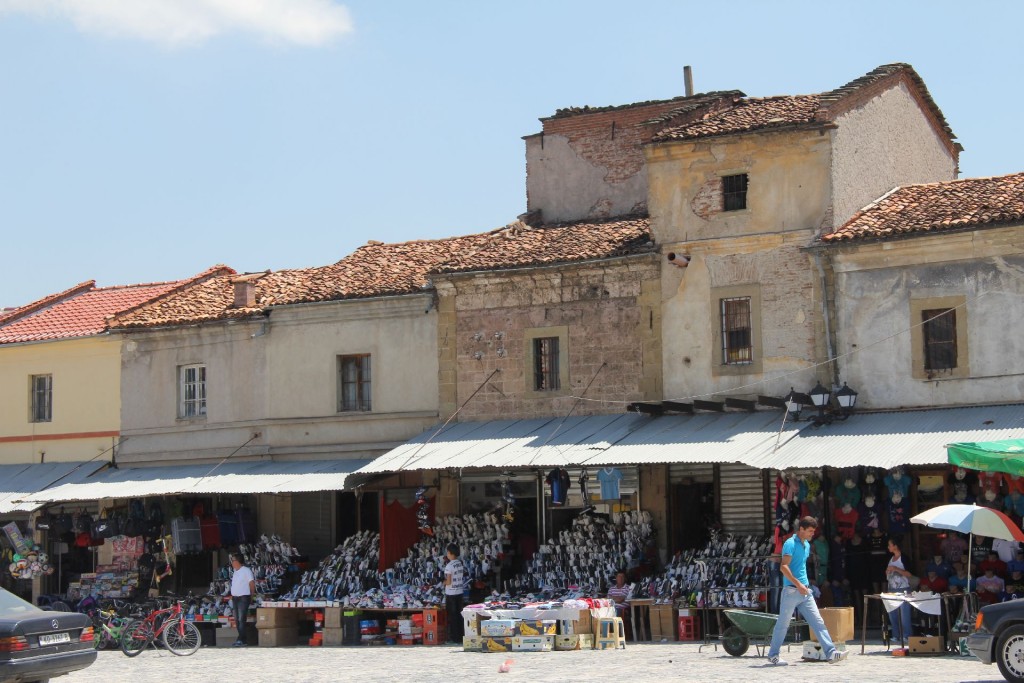 As we had to continue our trip – there was no camping ground in the surroundings -, we didn’t have time to visit Han Elbasan, one of the two “hans” (inns) in the Balkans that are still working. There are many interesting sites in the surroundings of Korçë (one of them is Voskopojë – see my blog post: The Churches of Voskopojë), and I am sure that we will be back soon next spring to explore all the sights this part of Albania has to offer.
As we had to continue our trip – there was no camping ground in the surroundings -, we didn’t have time to visit Han Elbasan, one of the two “hans” (inns) in the Balkans that are still working. There are many interesting sites in the surroundings of Korçë (one of them is Voskopojë – see my blog post: The Churches of Voskopojë), and I am sure that we will be back soon next spring to explore all the sights this part of Albania has to offer.
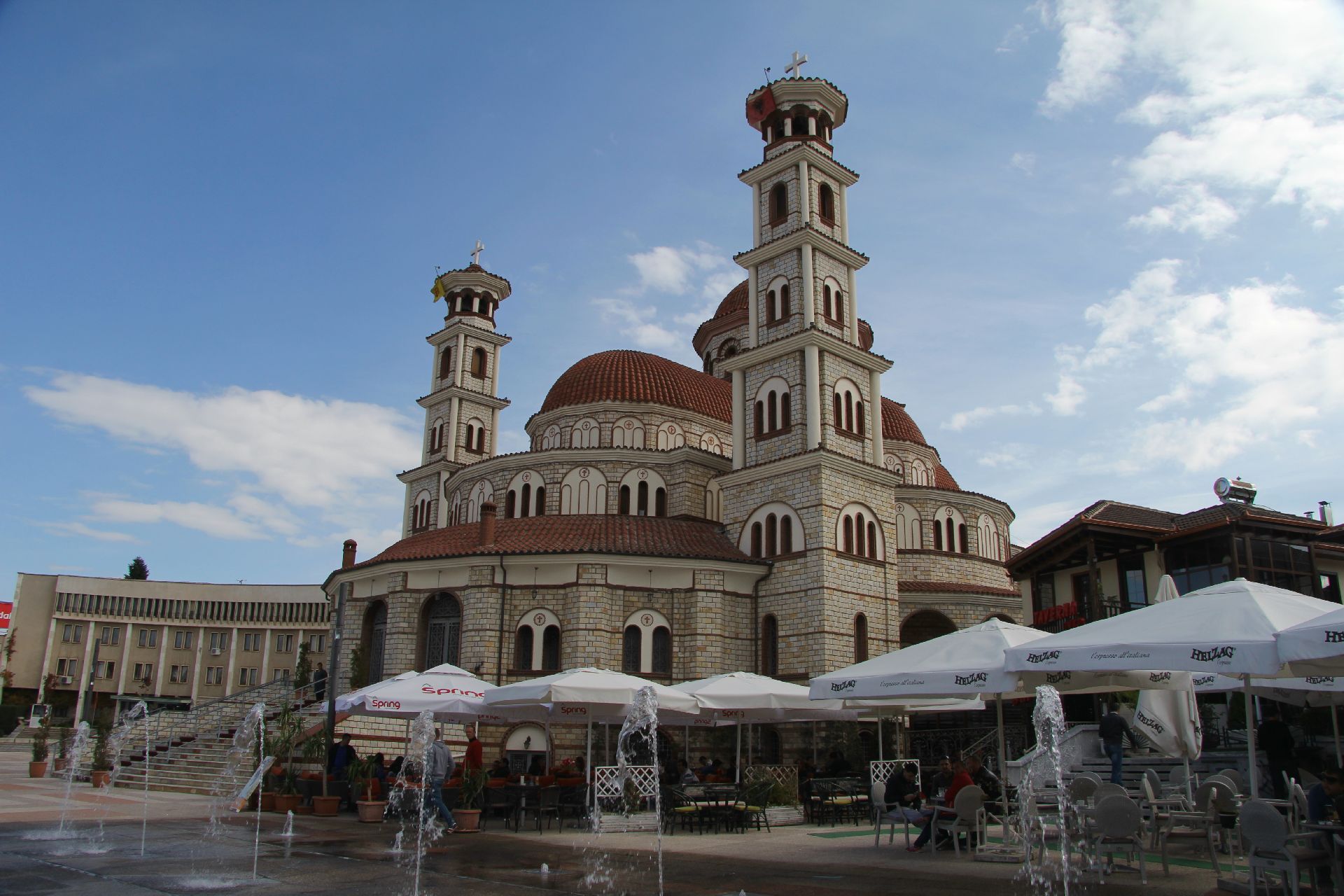

Information and good photos of the recently reopened museum of icons in Korce http://www.archdaily.com/800159/korca-icon-museum-national-museum-of-medieval-art-bolles-plus-wilson
Thank you very much for the information. I hope to visit the new museum in spring. All the best and kind regards, Marianne
[…] the road through South East Albania you should not miss Korça with its lively centre and famous Museum of Medieval Art that houses a huge collection of old icons. […]